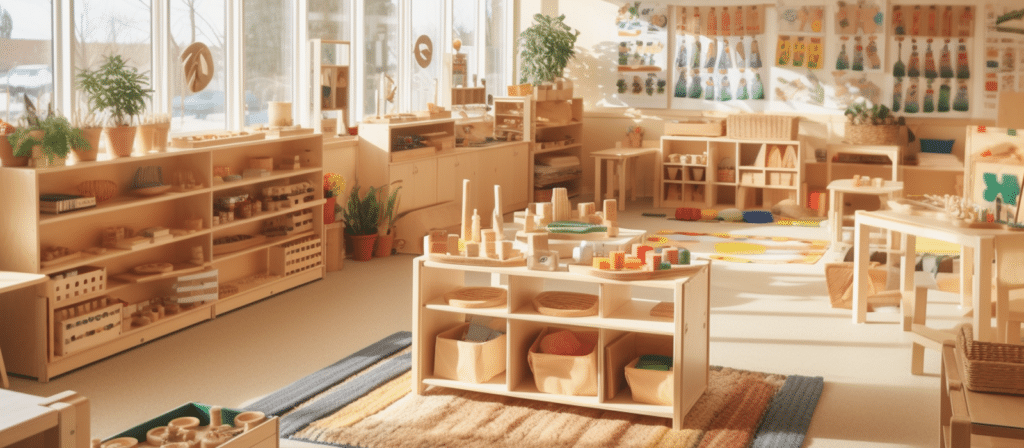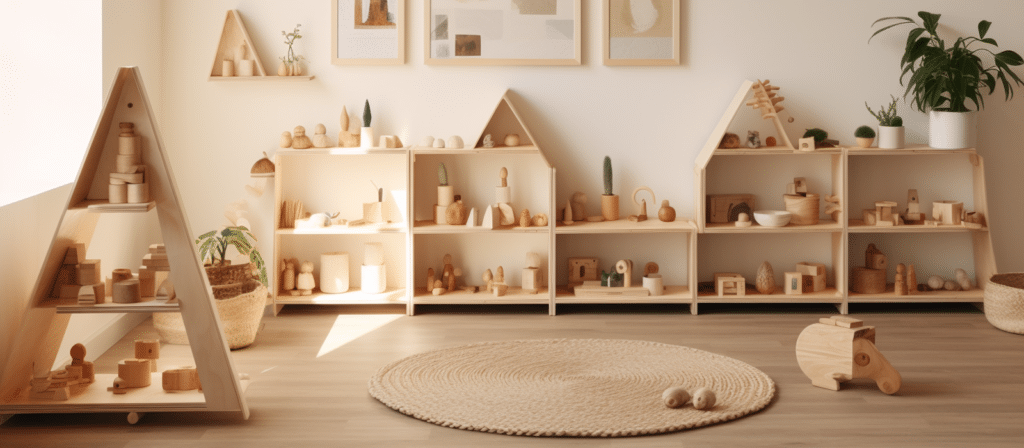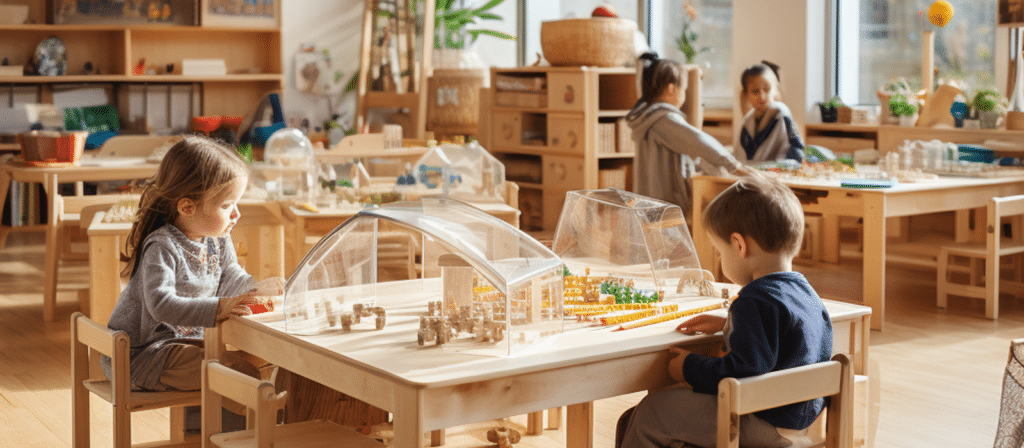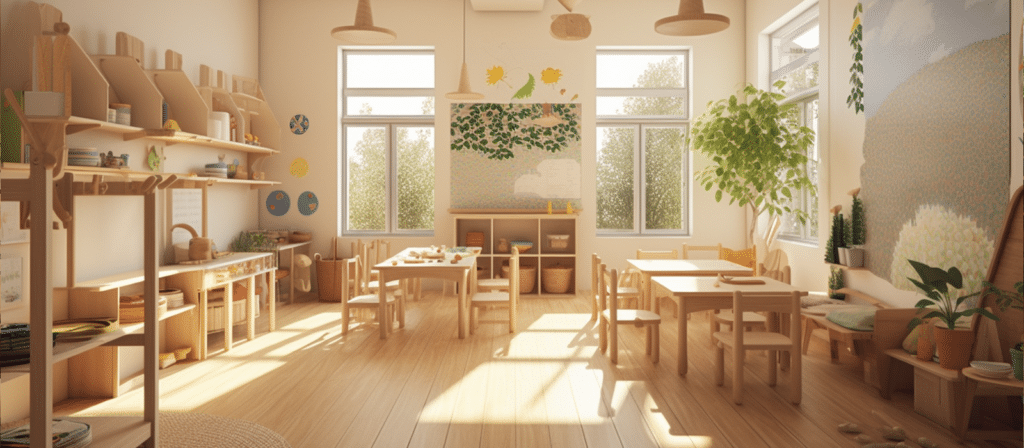Are you looking to create an engaging Montessori classroom environment that fosters independence and a love for learning? Whether you’re a seasoned Montessori educator or a curious parent, the process of setting up a Montessori classroom can be a transformative journey. In this comprehensive guide, we’ll address your questions and provide you with a step-by-step roadmap to set up an authentic Montessori classroom that inspires curiosity and self-discovery.
Montessori Classroom Setup: A Step-by-Step Guide is your gateway to creating an educational space that aligns with Maria Montessori’s philosophy. Here, we’ll walk you through each crucial step, from selecting the right location to arranging materials, to help you design a classroom that nurtures a child’s innate desire to learn.
What is Montessori Education?
Before diving into the specifics of setting up a Montessori classroom, let’s briefly discuss what Montessori education is all about. Developed by Dr. Maria Montessori in the early 20th century, the Montessori method is an educational approach that focuses on the holistic development of a child. It recognizes that children learn best through active engagement and encourages them to follow their natural curiosity and explore the world around them.
Why is Montessori Classroom Setup Important?
Before diving into the details, let’s address why a well-designed Montessori classroom is so vital. The environment plays a crucial role in a child’s learning experience, shaping their behavior, and influencing their cognitive and emotional development. A thoughtfully arranged classroom can encourage children to explore, collaborate, and develop essential life skills. By providing a well-organized space, we create an environment that supports the Montessori philosophy and promotes self-directed learning.

Step 1: Define the Purpose of Each Area
The first step in setting up a Montessori classroom is to define the purpose of each area. The classroom should be divided into specific zones that cater to different aspects of a child’s development. These areas typically include practical life, sensorial, language, math, culture, and art. Each zone should be clearly defined and equipped with materials that promote hands-on learning and exploration.
Step 2: Arrange Furniture and Materials
Once you have defined the purpose of each area, it’s time to arrange the furniture and materials accordingly. Montessori classrooms often feature child-sized furniture to promote independence and allow children to move freely. The furniture should be arranged in a way that promotes a sense of order and encourages interaction among students. Additionally, make sure to display materials on open shelves, making them easily accessible to children, and promoting a sense of ownership and responsibility.
Step 3: Create a Calm and Inviting Atmosphere
Creating a calm and inviting atmosphere is essential in a Montessori classroom. Soft lighting, natural colors, and soothing decorations can help create a peaceful environment that supports concentration and focus. Consider incorporating elements of nature, such as plants or natural materials, to bring a sense of tranquility to the space. Avoid clutter and excessive visual stimuli, as they can be distracting and hinder a child’s ability to concentrate.
Step 4: Incorporate Nature and the Outdoors
In line with the Montessori philosophy, it is crucial to incorporate nature and the outdoors into the classroom. Consider adding a nature table where children can explore natural objects like leaves, rocks, and shells. You can also create a small garden or use plants to bring a touch of nature indoors. This connection with the natural world helps children develop a sense of wonder and appreciation for their surroundings.

Step 5: Foster Independence and Order
One of the fundamental principles of the Montessori method is fostering independence and order. Make sure to provide ample opportunities for children to develop self-help skills and take responsibility for their environment. Incorporate child-sized tools and materials that allow children to engage in practical life activities, such as preparing their snacks or cleaning up after themselves. This emphasis on independence and order helps develop a sense of self-confidence and responsibility in young learners.
Step 6: Incorporate Open-ended Materials and Activities
To encourage creativity and problem-solving skills, it is essential to incorporate open-ended materials and activities in the Montessori classroom. Open-ended materials are items that can be used in various ways and allow for open-ended play and exploration. Examples include building blocks, art materials, and loose parts like seashells or buttons. These materials encourage children to think critically, experiment, and express their creativity in their own unique ways.
Step 7: Create a Peace Corner
A peace corner is a designated area in the classroom where children can retreat and calm themselves when they are feeling overwhelmed or upset. This area should be equipped with soft cushions or mats, calming sensory materials like stress balls or sensory bottles, and books that promote emotional well-being. Encouraging children to use the peace corner when needed helps them develop self-regulation skills and promotes a positive emotional climate in the classroom.
Step 8: Personalize and Adapt the Classroom
Lastly, it is crucial to personalize and adapt the classroom to the needs and interests of the children. Get to know your students and incorporate elements that reflect their cultural backgrounds, interests, and unique learning styles. This personalization creates a sense of belonging and ownership, making the classroom a safe and inclusive space for all children.

Creating a Prepared Environment
The first step in setting up a Montessori classroom is creating a prepared environment that is conducive to learning. A prepared environment is carefully designed to meet the developmental needs of the children and encourages independence, order, and concentration. Here are some key elements to consider:
- Furniture: Choose child-sized furniture that is comfortable and allows children to easily access materials. Tables and chairs should be lightweight and adjustable to accommodate different age groups.
- Layout: Arrange the furniture and materials in a logical and organized manner. Create distinct areas for different activities, such as a reading corner, a practical life area, a sensorial area, and a math area. This helps children develop a sense of order and allows them to navigate the classroom independently.
- Materials: Select Montessori materials that are designed to promote hands-on learning and engage the senses. These materials should be arranged on open shelves or in labeled bins, making it easy for children to access and return them.
- Natural Elements: Incorporate natural elements into the classroom, such as plants, wooden materials, and natural lighting. These elements help create a calm and inviting atmosphere that promotes a connection with nature.
- Flexibility: Allow for flexibility in the classroom setup to accommodate the changing needs and interests of the children. Keep the environment dynamic by regularly rotating materials and introducing new activities that align with the children’s current interests.
By creating a prepared environment, you are setting the stage for a rich and engaging learning experience for your students.

Practical Life Area
The practical life area is an essential component of a Montessori classroom. It focuses on developing independence, fine motor skills, concentration, and coordination. Here’s how you can set up this area:
- Practical Life Materials: Include materials such as pouring exercises, buttoning frames, polishing activities, and dressing frames. These materials allow children to practice real-life skills and develop their fine motor skills.
- Child-Sized Tools: Provide child-sized tools, such as brooms, dustpans, and gardening tools, to encourage children to participate in everyday tasks. This helps them develop a sense of responsibility and independence.
- Order and Organization: Arrange the materials in a logical and orderly manner, making it easy for children to find and return them. Use labels and picture cues to assist younger children in maintaining order.
- Real-Life Experiences: Incorporate opportunities for real-life experiences, such as setting up a snack preparation area or a flower arranging station. This allows children to engage in meaningful activities that promote independence and responsibility.
Sensorial Area
The sensorial area in a Montessori classroom focuses on developing the senses and refining the child’s perception of the world. Here are some steps to set up this area:
- Sensorial Materials: Include materials that engage the senses, such as color tablets, sound cylinders, geometric solids, and tactile boards. These materials help children explore and refine their senses.
- Order and Gradation: Arrange the materials in order of complexity, starting from simple to more complex activities. This allows children to progress at their own pace and develop their sensory discrimination skills.
- Control of Error: Ensure that the materials have built-in control of error, meaning that the child can self-correct their mistakes without adult intervention. This promotes independence and encourages children to learn from their own experiences.
- Exploration and Manipulation: Provide ample opportunities for exploration and manipulation of the materials. Encourage children to use their senses to explore the different textures, shapes, sounds, and smells.

Language and Math Areas
In addition to the practical life and sensorial areas, a Montessori classroom should also have dedicated spaces for language and math activities. Here’s how you can set up these areas:
- Language Area: Create a cozy reading corner with a variety of books at different reading levels. Include materials for language enrichment, such as sandpaper letters, moveable alphabets, and language cards. Provide writing materials, such as pencils, pens, and paper, to encourage children to practice their writing skills.
- Math Area: Set up a math area with a range of manipulative materials, such as number rods, golden beads, and counting objects. Include materials for learning basic math concepts, such as addition, subtraction, multiplication, and division.
Incorporating Nature and Outdoor Spaces
Montessori education recognizes the importance of connecting with nature. If possible, create an outdoor space that complements the indoor classroom environment. This outdoor space can be used for gardening, nature exploration, and physical activities. Incorporate natural elements, such as plants, rocks, and sand, to provide children with opportunities to engage with the natural world.
Conclusion
Setting up a Montessori classroom requires careful thought and consideration. By creating a prepared environment, organizing materials, and incorporating nature, you can create a space that promotes independence, exploration, and a love for learning. Remember, the goal is to create an environment that nurtures the whole child and allows them to follow their natural curiosity and interests. Happy classroom setup!










